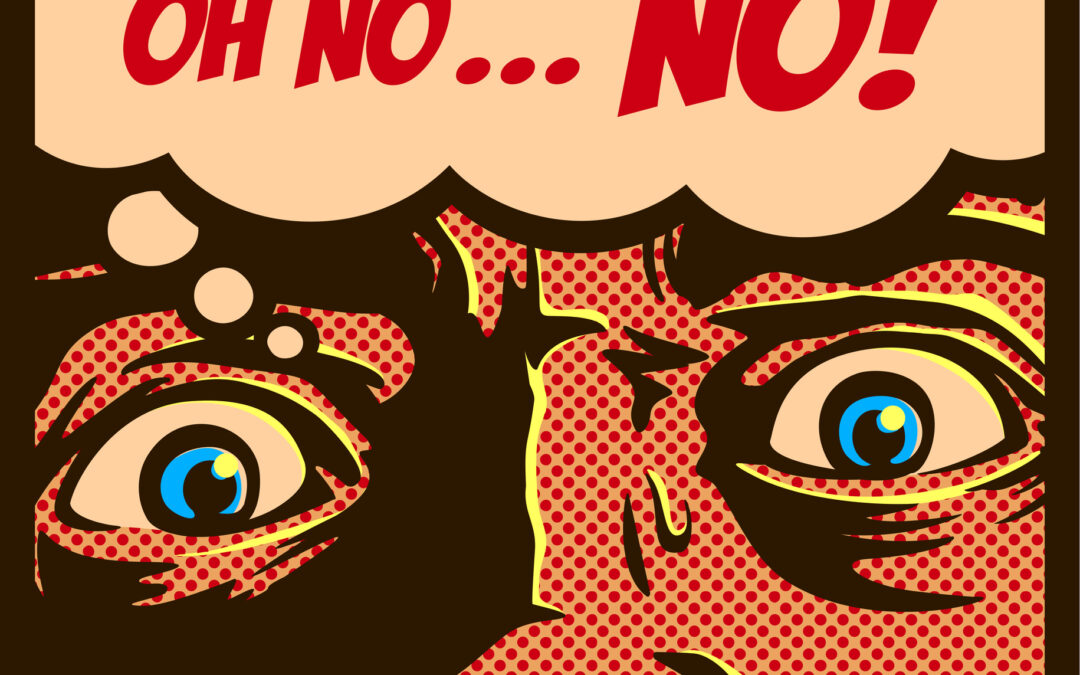When was the last time you heard from your inner critic? You know, that voice in your head that constantly judges you, puts you down and compares you to others. The one that tells you you’re not good enough or smart enough and says things you would never dream of...

Why I Think “Worthless” Isn’t a Feeling AND Why that Matters
Have you ever been so dejected or depressed that you began to question your worth as a person? What triggered that moment for you? Was it:
- A rejection, break-up, or abandonment?
- A harsh word or critique that hit like an arrow in the heart?
- A failure to live up to your own expectations?
- Feeling in over your head, burned out, or unable to perform?
- Something else?
As counselors, we often hear clients describe their feeling during these moments as “worthless.” It’s as if some lack of performing, achieving, belonging, or approval could strip away a person’s value as a human, leaving them with a sense of emptiness.
Do you have a sense of self-worth that goes up and down? A conditional self-worth that is dependant on being liked or on your achievements? As you’ve perhaps experienced, having a conditional self-worth can be risky:
- Perhaps you overwork, overachieve, and compulsively climb ladders trying to prove yourself. Do ever really reach the finish line or are you stuck on a hamster wheel constantly striving? Does that cost you time with your family or friends? If a setback occurs, do you name yourself “failure” and pay a cost with anxiety, depression, or a suicidal urge?
- Perhaps you base self-worth on the condition of others’ approval (which can go up or down). Do you have a good or bad day depending on if someone else’s reactions to you? Does that ever lead you to over-committing or people-pleasing? Do you hold back, minimizing your voice in relationships? If a subtle rejection occurs, do you notice yourself having a big emotional response?
Perfectionism is the embodiment of achievement-oriented or approval-oriented self worth. Brene Brown describes perfectionism and its cost best:
“Perfectionism is not the same thing has striving to be your best. Perfectionism is not about healthy achievement and growth. Perfectionism is the belief that if we live perfet, look perfect, and act perfect, we can minimize or avoid the pain of blame, judgment, and shame. It’s a shield. Perfectionism is a twenty-ton shield that we lug around thinking it will protect us when, in fact, it’s the thing that’s really preventing us from taking flight.”
-Brene Brown, The Gifts of Imperfection
It’s time to change how we think about WORTH. What if you could experience a form of self-worth that did not ebb and flow with your achievement or approval? Would you step off of the “conditional self-worth” rollercoaster? Wouldn’t it be amazing to experience security in your self-worth despite successes or failures!
I want to suggest two key strategies for revolutionizing your experience of self-worth.
- Clarify what you really feel when you say you feel “WORTHLESS.”
I want to suggest that “WORTHLESS” is a judgment NOT a feeling. It’s a proclamation of subjective self-assessment. It is more thought than it is emotion. These judgments are similarly not feelings:
- Bad
- Failure
- Fat
- Ugly
- Stupid
- Crazy
But, you might argue, “I DO feel strongly when I have those thoughts!” YES! A distorted negative self-evaluation would certainly evoke a strong feeling! Let’s see if we can clarify what you are really feeling in those moments. Perhaps one of these feeling words would more accurately describe the emotion that goes with that thought:
- Disappointment
- Shame
- Sadness
- Anger
- Fear
- Worry
- Guilt
This perspective shifting skill is essential: Instead of going along with the “I’m worthless” judgment, NAME WHAT YOU’RE FEELING and WHY.
For example: “I’m feeling ashamed because I yelled at my kids.” “I am feeling afraid because I lost my job.” “I am feeling sad because she broke up with me.”
2. REDEFINE WORTH.
The striking reality is that there is no standard measurement of WORTH. There is not a test you can take, a medal you can earn, or a status you must reach. The concept of what defines self-worth is unscientific, self-determined, and deeply personal. YOU HAVE THE POWER to change your self-assessment.
What if you were to intentionally choose to believe WORTH is a birthright, something inherent in your humanness? I think that’s what the founders of our country believed when they wrote these words in the Declaration of Independence:
“We hold these Truths to be self-evident, that all men are created equal, that they are endowed by their Creator with certain unalienable rights, that among these are Life, Liberty, and the Pursuit of Happiness.”
WORTH does not have to be conditional. You can found your self-worth on the powerful certainty that you have sustaining value that can not be earned nor lost.
HYPOCRICY CHECK: Do you apply unconditional worth to other people better than to yourself? For example, if you’re a parent, your child might make choices that make you lose their trust, but could they ever lose worth in your eyes? Never! You might already believe in unconditional self-worth, as it applies to others. Are you applying the same concept to yourself? If not, now’s the time. Take the leap of faith. It’s worth it!
Now, if we combine the name-your-feelings skill with the concept of unconditional self-worth, you can see how it’s possible to make mistakes, have setbacks, and receive rejection without it meaning anything at all about your worth as a human.
If you’d like help building a secure sense of self-worth (or overcoming your achievement- or approval-oriented perfectionism), a therapist at Star Meadow Counseling may be available to help.
Also check out behavioral strategies for shifting out of worthless thoughts in our latest blog: “How to Disobey ‘Worthless’ Thoughts.”

How To Stop Beating Yourself Up

Afraid of Failure? Here’s Advice on Coping with Failure
Fear of failure causes us to put the brakes on our life. When we’re so afraid of failing at something, we either don’t try at all, or we subconsciously undermine our own efforts to avoid an even bigger failure. Without question, fear of failure is immobilizing and,...

7 Great CBT Websites
Are you interested in learning more about Cognitive-Behavioral Therapy as a mode of counseling or self-help? Check out these 7 amazing online resources: https://llttf.com/ Living Life to the Full Living Life to the Full is an interactive CBT website. This free...

Understanding Cognitive Therapy: The Basics
Have you ever wondered how your feelings are generated? Do you understand what it is that triggers your emotions? The fact is, there are many different answers to these questions in the field of psychology. Let’s take a look at just one of those approaches from the...

Authentic vs. Inauthentic Shame: Why It’s Essential to Know the Difference
The feeling of shame has a reputation of being the vampire of emotions--the feeling that will suck the life right out of you. Because it comes with it a very physical discomfort, heat, and pain, it’s probably on your list of emotions to be avoided at all costs. In...








